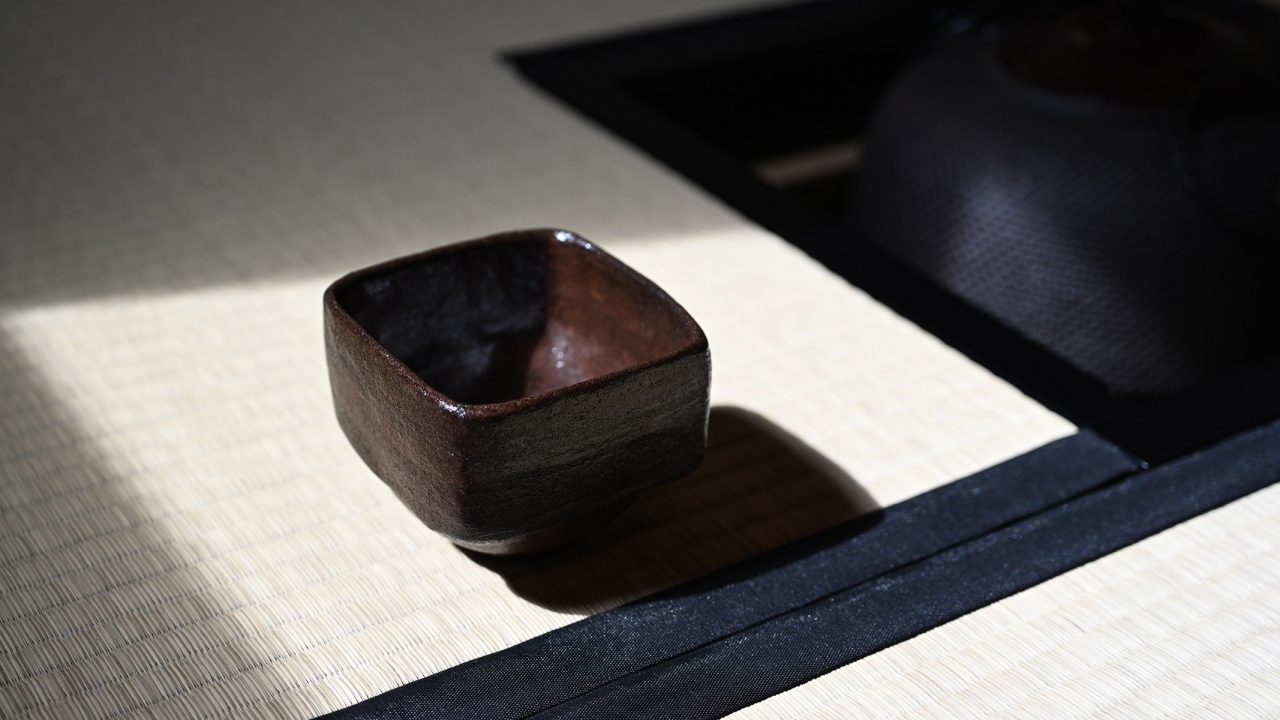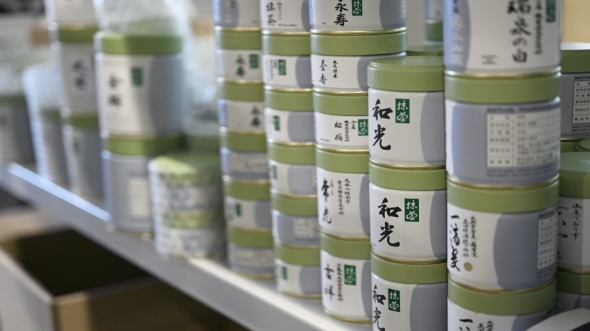Reading time: about 10 minutes
Sen no Rikyū stands out as one of the most captivating figures in Japanese history, his impact on aesthetics and philosophy is immeasurable. Much of what we recognize today as Japanese aesthetics owes a great deal to his contributions. But who was Sen no Rikyu and what made him immortal?

Tea's Path in a Time of Unrest
Sen no Rikyu was born in 1522, during the most restless era in Japan, when bloodshed and chaos prevailed, and military lords were tangled in an endless fight for power. Sen no Rikyu was born into a merchant family, and tea undoubtedly held a significant allure for both the nobility and affluent merchants. At that time, tea was highly regarded as a medicine, and its value made it available only to the wealthiest people. As a young man, Rikyū showed a keen interest in Buddhist arts, particularly the emerging practice of the tea ceremony, chanoyu. He learned from the most prominent tea masters and underwent Zen training in Daitokuji. Zen Buddhism and the charismatic monks he studied under had a profound influence on shaping Rikyū’s style which eventually made him the most important tea master in history.
Wabi-sabi and Wabicha
Thanks to a Zen Buddhist monk, Murata Jūkō, and Sen no Rikyū who followed his legacy, a new philosophy was born called wabi-sabi. Wabi can be translated as "subdued, austere beauty," while sabi means “rust”.
"Wabi-sabi" is the “flawed beauty”. It “nurtures all that is authentic by acknowledging three simple realities: nothing lasts, nothing is finished, and nothing is perfect.” (Richard Powell) It finds beauty in things that are imperfect, impermanent, and incomplete. Wabi-sabi quickly found its way to tea ceremony. Preparing tea embracing simplicity and the perfect imperfections is what we call wabicha. While wabi-sabi and wabicha were concepts born about a century before Sen no Rikyū, they stayed within temple grounds, and Rikyū was the first who introduced them to the aristocracy. In luxurious noble residences and lavish temples, he built small tea rooms, thatched-roof little huts with plain plaster walls. Instead of using gorgeous porcelains, he used humble earthenware and natural utensils for making tea in a mostly bare space where the only adornment was a painted hanging scroll and a few hand-picked flowers in the alcove. His dimly lit, rustic tea pavilions soon became the center of attention and the center of culture. Those who stepped or more like crawled through their low entrance, broke the communication with the outer world and entered a different realm. In the raging war times, these tea pavilions were the sheltered islands of peace where guests could relax and enjoy the rare moments of serene tranquility with a bowl of tea. Rikyū called these places sō-an - grass hermitage.
Sen no Rikyu became a confidant and a spiritual mentor for the most formidable warlords of his era, ultimately emerging as one of Japan's most influential trendsetters in art.

Rikyū and the Raku pottery
Rikyū was involved in the construction of the Jurakudai palace, the new residence of Toyotomi Hideyoshi, the most powerful man of his time but probably in the entire Japanese history. That is where he met a tile-maker, Tanaka Chōjirō. They quickly became friends and collaborators. Chōjirō crafted hand-moulded, roughly-shaped tea bowls from porous red clay, and they developed a style together that fit perfectly in Rikyū’s wabicha concept. Chōjirō’s innovative ceramic art, embracing rustic beauty and imperfections, had and still has a profound impact on Japanese ceramic art.
Toyotomi Hideyoshi personally presented Jokei, Chōjirō's son, with a seal that bore the Chinese character for raku (“enjoyment"). Since then, Raku has been the name of the family that produced the wares called raku ware. Both the name and the ceramic style have been passed down through the generations of the family, up to the current 16th generation.
Rikyū's Farewell
Rikyū’s close ties with Toyotomi Hideyoshi eventually led to his demise. Hideyoshi renowned for his fiery temper, engaged in serious conflicts with Rikyū, ultimately ordering him to commit seppuku, a ritual suicide. Rikyū's last act was to hold an exquisite tea ceremony. After serving all his guests, he gifted each of them a piece of the equipment. The bowl, however, he shattered saying: "Never again shall this cup, polluted by the lips of misfortune, be used by man." As the guests departed, one remained to serve as a witness to Rikyū's death.
The following year, Hideyoshi built an extravagant new castle. As a final tribute to his late mentor and friend, he instructed that its design should please Rikyū.

Rikyū-ki
The direct descendants of Sen no Rikyū branched into the three lines of both the Sen family and schools of tea ceremony known as the san-Senke today - Omotesenke, Urasenke, and Mushakōjisenke, now the largest tea ceremony schools. Unique memorial tea ceremonies called Rikyū-ki are held annually by many tea ceremony schools. The Omotesenke school's annual memorial takes place at the family's headquarters each year on March 27, and the Urasenke school's takes place at its own family's headquarters each year on March 28. The three Sen families take turns holding a memorial service on the 28th of every month, at their mutual family temple, the subsidiary temple Jukōin at Daitoku-ji temple.
Rikyū Ceremonial Matcha Set
To enhance your tea experience, we created the Rikyū Ceremonial Matcha Set, all its pieces premium tea and tea ware, hand-crafted exclusively in Kyoto & Nara. The set encapsulates the essence of the great tea master, Rikyū's legacy bringing the simplicity and beauty of wabicha to your home.

 Next >>
Next >>



